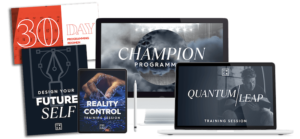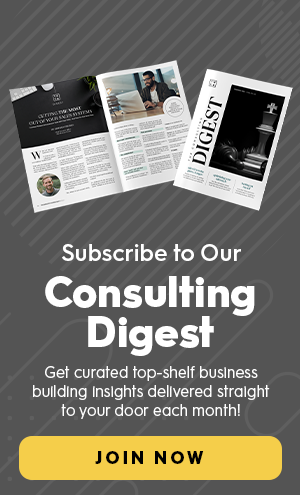Making “No Decision” is Not an Option
As business owners, we are frequently faced with increasingly difficult decisions.
- Do I pursue this new offer or product – or stick to what I have?
- Do I enter into this partnership – or keep doing my own thing?
- Do I hire this person or that person?
- Do I grow the business or keep it small?
- Do I sacrifice the thing that’s working to go after the thing I truly want?
And that’s just to name a few.
Sometimes the upside seems immense, and the downside seems catastrophic. Plus, it never feels like we get as much time as we actually want/need to make our choice.
Mounting pressure… increased stress… elevated heart rates…
It can feel overwhelming – or even paralyzing. If we’re not careful, it pushes us toward avoidance.
However, if we were to be gut-level honest with ourselves, most of our biggest mistakes in life and business come from INDECISION more than they do from BAD DECISIONS.
The painful truth of the matter is this – if you don’t make a decision, someone else (or something else) will make it for you. And you may not like the outcome at all.
So, let’s take indecision off the table. The ball is in your court. You have a tough choice to make.
What do you do?
Let’s walk through 3 simple questions that form a framework for how to approach these difficult decisions, and make them far easier.
“Which Option Will My Future Self Regret the Least?”
You’ve probably been asked, or have pondered the following question before: “If you could go back in time, what advice would you give your younger self?”
It’s easy to look at past problems through the lens of the present.
We do it all the time. It’s called hindsight.
But when is the last time you looked at present problems through the lens of the future?
If you had a time machine, and could travel forward 10 years, what would your future self tell you to do? How would they feel about the decision you’re currently making?
Now – thinking through that lens – which of the options would your future self regret the least?
One of the biggest benefits to making decisions from this frame is that you can often reduce the stress of your present decision by allowing yourself to imagine a time in the future when you will not be nearly as stressed/anxious/upset by that choice as you are right now in the present.
This allows you to release some of the tension and pressure that you’ve built up around the decision in front of you, and allows you to think more clearly without the emotional baggage.
“What is My Perfect Outcome/Result?”
This might seem very basic, but it would blow your mind how often we work with clients who are agonizing over a business decision… yet haven’t even taken the time to actually sit down and think about what they WANT.
If you don’t know what you want, there’s no target, and, therefore, no reason to make the decision at all.
Sometimes, the simple act of getting to the bottom of what you actually desire… and re-aligning with your ultimate goals… will make the answer seem obvious. You may even find yourself wondering, “Why was I even considering Y, when X actually moves me toward my ultimate goal?”
And that is what we’re after here, right?
We don’t want the difficult decision to stay difficult. We want it to become obvious.
“If I Wanted to Make My Perfect Outcome Impossible, What Would I Do?”
The late, great Charlie Munger, former vice chairman of Berkshire Hathaway and close partner of Warren Buffet, once said, “All I want to know is where I’m going to die, then never go there.”
It sounds funny, but this gives you an insight into how Munger thought.
He believed in leveraging the power of “inversion” when modeling the outcomes of decisions. What do we mean by that? Simply that he found the desired outcome, then thought of all the ways he would NOT achieve that outcome… and avoided them.
In his book “Thinking Fast and Slow,” author and psychologist Daniel Kahneman calls this process a “pre-mortem.” Thinking ahead to all the things that could possibly kill your chances of getting what you want, and then forming the necessary plans to make sure that you side-step them.
Let’s walk through a quick example.
Say your outcome is losing weight and living a healthy lifestyle.
How would we make that outcome impossible?
- Eat junk food every day
- Never exercise or work out
- Incur massive amounts of stress and elevated cortisol levels
Boom. You have a list of 3 things you absolutely cannot do if you intend to achieve your goal.
But now, let’s take inversion one step farther.
Go down that list of three things and invert them. Here’s an example.
Okay, so you know you can’t eat junk food every day if you want to achieve your ultimate goal of being healthy and losing weight. So, your outcome there is to NOT eat junk food every day.
How would you make that outcome impossible?
- Keep your pantry constantly stocked with junk food
- Hang out with friends who have unhealthy eating habits
- Eat out instead of cooking your own meals
You’re now a rung deeper on the inversion ladder. The further down you go, the more precise the actions required, and the greater the clarity on how to achieve what you want.
Don’t Sit On It For Too Long
One final note before we wrap up.
The truly elite leaders of the world don’t take forever to make decisions. They will make even the most weighty and intense decisions with lightning speed.
Why?
Because they’re more afraid of making no decision… than they are of making the wrong decision. This ties back to what we were talking about at the start.
How are they able to do this so quickly?
Unity and alignment with the ultimate outcome.
Got a tough choice sitting in front of you?
Take 30 minutes (set a timer), grab a notebook and pen, and sit in a quiet room. No distractions. Devote yourself to getting to the bottom of what you want. The best possible outcome. The thing that you desire, which lies on the other side of this decision.
(If you’ve ever read “The Road Less Stupid,” by Keith Cunningham, he calls this “Think Time.”)
From there, you’ll start to notice the wrong pathways melting away, until the right pathway begins to come into focus.
Begin applying this 3-question framework to your own decisions, and just watch how much easier the toughest choices become!

Want to Program Your Mind for Success?
From your decisions, to your habits, to your view of your past experiences – you can tune your brain and calibrate it toward success. We’ve put together one of the most potent mental training courses in the industry, called “Champion Programming.” You can grab your copy below!

